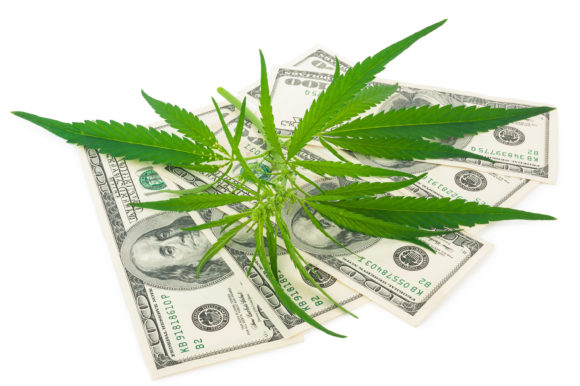
A new report out examining how the COVID-19 pandemic impacted the U.S. cannabis industry shows consumer purchasing spiked, dropped, then started to stabilize in the time between when things began to unravel for the nation in March until recently.
In other words, it appears that the experience for cannabis, as a product, wasn’t much different from other mainstream products, such as toilet paper, certain foods, and other essentials.
The report, “The State Of The Cannabis Industry 2020: Cannabis, COVID-19, and Beyond,” was put together by LeafLink, Flowhub and Vangst.
Spoiler alert: It holds an optimistic view of post-pandemic recovery for the industry.
The report shows a small decline in sales throughout February compared with the same period in 2019. A two-week sales spike was seen in mid-March around the time the U.S. started to react to COVID-19 with stay-at-home orders and toilet paper shortages, the report shows.
Following that “panic spike,” a decline in sales occurred as most states began sheltering in place. Then many states started deeming dispensaries as essential businesses. It’s therefore possible that consumers weren’t worried about product accessibility and didn’t feel the need to stock up like they did in the prior weeks, the report theorizes.
What followed all of that was a recovery period with more spikes leading up to the international cannabis celebratory 4/20 date. Since April 20, sales have stabilized, but at volumes averaging 40% higher than 2019, the report shows.
Those who work to insure cannabis businesses have seen their retailer clientele grow and prosper, however the impacts of the pandemic on cannabis and insurance appear to be more complex than a simple comparison of greater or fewer sales.
Steven B. Sherman, vice president of the Cannabis Risk Group for PSA Insurance & Financial Services in Hunt Valley, MD, has been hearing from a number of his carrier partners with pandemic-related inquiries about his clientele.
“Insurers have started asking about precautions that the cannabis industry is taking regarding Covid-19, and we expect some to strengthen exclusionary language regarding virus or pandemic related claims,” Sherman said.
There are already several concerning exclusions in policies for cannabis businesses.
Sherman has been advising his rapidly growing clients to budget for increases in their premiums, particularly their general and product liability costs, which are closely tied to their revenues.
The report also indicates that, as with other industries, fortune favors the prepared.
Between March and April 24, dispensaries with order-ahead capabilities sold 22% more on average than dispensaries without order-ahead capabilities, and they saw 8% more transactions and a 13% increase in average order amounts.
The drop in sales on March 25 had a smaller impact on dispensary locations with order-ahead capabilities. Between March 20 and March 25, Colorado dispensaries with order ahead saw a 45% drop in sales compared with the 56% drop in sales locations without order ahead, an 11% difference, the report shows.
Even as markets stabilized, dispensaries with order ahead capabilities apparently continued to outperform. On April 2, for example, average daily recreational sales were 27% higher for dispensaries with order-ahead in Colorado and 18% higher for dispensaries with order-ahead in California, according to the report.
Many retailers also shifted their strategies during the pandemic.
Nearly eight-in-10 (79%) introduced curbside pickup and delivery models in response to COVID-19, 64% pivoted to a delivery strategy, and 43% increased their focus on digital marketing and e-commerce strategies, the report shows.
The report also shows that cannabis consumers didn’t change their product preferences: during the Pre-COVID period, flower and cartridges remained top choices, despite some expectations that a respiratory illness would lead to decreased demand for inhalables, while purchases of edibles and ingestibles remained stable.
What did change was consumer buying habits.
“As a response to COVID-19, cannabis consumers are buying more overall, but generally shopping less frequently,” the report states. “Average daily total sales and average daily basket values have increased, but daily number of transactions dipped dramatically during the COVID Response period.”
People stocked up more during every dispensary visit, and bought more at each transaction. The average overall basket size on March 17 for recreational dispensaries rose to $69.37, with Colorado at $73.13. The average recreational basket size, for comparison, on April 20, 2019 on was $62.11 and the average Saturday (normally the busiest consumer purchasing day of the week) was between $58-$62.
On March 25, average daily recreational sales went back down to an average 2020 pre-COVID Wednesday. The decrease was not because people were buying less, but because they were going to the store less often. The overall daily number of transactions decreased 19% compared to an average 2020 pre-COVID Wednesday, according to the report.
There were some negatives in all of that data, but even then there was a bright side in a report that seemed to be clearly high on the potential of the cannabis industry.
The report shows 36% of all surveyed companies reduced headcount and 33% utilized employee furloughs to weather the impact of the coronavirus.
But a hiring rebound in the cannabis industry already appears to be underway: a survey of workforce planning projections shows 32% of firms plan to maintain their employee headcount while 68% plan to increase the headcount.
Related:
Was this article valuable?
Here are more articles you may enjoy.
"industry" - Google News
July 30, 2020 at 04:31AM
https://ift.tt/3368DkT
Report Holds Optimistic COVID-19 Recovery View of Cannabis Industry - Insurance Journal
"industry" - Google News
https://ift.tt/2RrQtUH
https://ift.tt/2zJ3SAW
Bagikan Berita Ini















0 Response to "Report Holds Optimistic COVID-19 Recovery View of Cannabis Industry - Insurance Journal"
Post a Comment